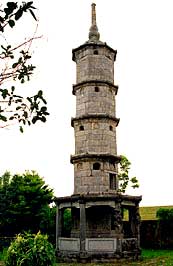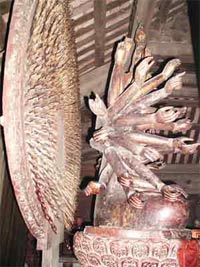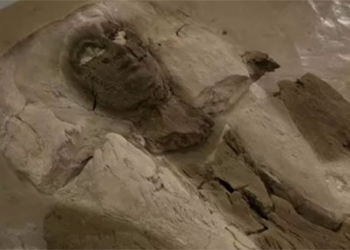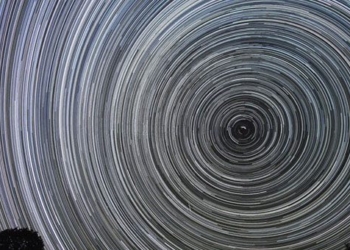 The famous statue of Avalokiteshvara with a thousand eyes and a thousand hands at But Thap Pagoda holds many “hidden meanings” and profound philosophies. It reveals much about the aesthetic views, human outlook, and cosmology of the Vietnamese people during the Later Le period in the latter half of the 17th century.
The famous statue of Avalokiteshvara with a thousand eyes and a thousand hands at But Thap Pagoda holds many “hidden meanings” and profound philosophies. It reveals much about the aesthetic views, human outlook, and cosmology of the Vietnamese people during the Later Le period in the latter half of the 17th century.
The statue of Avalokiteshvara with a thousand eyes and a thousand hands at But Thap Pagoda in Bac Ninh was carved by Truong Tho Nam and completed in 1656 during the Later Le dynasty. On the statue’s pedestal, it is inscribed: Nam Dong Giao, Tho Nam – Truong Xian Sheng – phung khac (understood as: Nam Dong Giao is the address, Tho Nam is the pen name, Truong is the surname, Xian Sheng is a learned person, phung khac means carved by the command of heaven and earth). According to some researchers’ interpretations, the term “phung khac” is translated as carved by the emperor’s command (but if carved by the emperor’s order, the statue should be placed in the capital, while this statue is worshiped in a pagoda).
The statue of Avalokiteshvara with a thousand hands and a thousand eyes – commonly known as Avalokiteshvara with a thousand eyes and a thousand hands – can be viewed as a miniature universe, created according to a very strict system of rules. These rules include the principles of Yin and Yang, the five elements, and the eight trigrams, always encompassing pairs of opposing but unified categories: Yang – Yin (good – evil, red – black, light – dark, heaven – earth). To help readers recognize these opposing elements in the composition of Truong Tho Nam’s work, the following analysis is presented:
1. The statue of Avalokiteshvara is made in the triad form, representing the harmonious relationship between heaven – earth – humanity. When looking at the statue, the circle behind is adorned with nearly a thousand hands, each hand carved with an eye, symbolizing Heaven. Here, Heaven is understood as a miniature universe. Within the universe, goodness is symbolized by the “three lights”, which include the sun, the moon, and the stars.
Since ancient times, the Vietnamese have recognized the sun as the center of life, its miraculous power represented at the center of the Dong Son bronze drum. In this statue, the artist places Avalokiteshvara’s face at the center of the statue. The sun is  the most prominent and radiant face of Avalokiteshvara, full of compassion and forgiveness. The sun here is depicted as dawn, with rays of light radiating upwards rather than sideways, implying that goodness is on the rise, possessing the power to conquer, symbolizing social civilization. The bright sun also symbolizes the wisdom of Avalokiteshvara spreading throughout the world, dispelling darkness. Those who engage in dubious actions cannot hide from the eyes of the Buddha. To express this profound meaning, the artist carved an eye in the palm of a hand, symbolizing the thousands of stars in the galaxy. All numbers on the statue are odd, with over 900 hands and more than 900 eyes. The artist believes that the number 1,000 is even, negative, static, and does not develop. Odd numbers, positive, dynamic, and continuously developing. This means that in the universe, countless stars are observing the earthly realm.
the most prominent and radiant face of Avalokiteshvara, full of compassion and forgiveness. The sun here is depicted as dawn, with rays of light radiating upwards rather than sideways, implying that goodness is on the rise, possessing the power to conquer, symbolizing social civilization. The bright sun also symbolizes the wisdom of Avalokiteshvara spreading throughout the world, dispelling darkness. Those who engage in dubious actions cannot hide from the eyes of the Buddha. To express this profound meaning, the artist carved an eye in the palm of a hand, symbolizing the thousands of stars in the galaxy. All numbers on the statue are odd, with over 900 hands and more than 900 eyes. The artist believes that the number 1,000 is even, negative, static, and does not develop. Odd numbers, positive, dynamic, and continuously developing. This means that in the universe, countless stars are observing the earthly realm.
2. Above, there is heaven, represented by a circle, dynamic, belonging to Yang; below, the earth is represented, static, belonging to Yin; a square shape connects heaven and earth, which is humanity – the figure of Avalokiteshvara. Heaven, earth, and humanity are three supernatural forces in the universe, possessing an unending creative power. The black dragon beneath the lotus throne symbolizes evil. The statue of Avalokiteshvara with a thousand eyes and a thousand hands sits upon the lotus throne, which is placed on the head of the black dragon, symbolizing that goodness always prevails over evil. The dragon’s two arms gently support the lotus throne, creating a cohesive composition, and it also suggests that evil possesses extraordinary strength; just one head is enough to elevate the entire statue. On Avalokiteshvara’s crown are three tiers, each with three heads, the ninth head representing Amitabha Buddha – symbolizing the realm of Nirvana. Thus, each head symbolizes a layer of heaven. Interestingly, Amitabha along with the celestial bird behind is attached to two heads (the number 2 belongs to Yin, symbolizing the souls of the deceased who have transcended to the Pure Land). These three heads together evoke the concept of the three times “past – present – future.”
3. In temples, the three statues of the three times are always placed at the highest position. In the art of composition, Truong Tho Nam has connected phenomena into a symbol: The large circle behind is linked to the celestial bird, forming the image of the Bodhi leaf, with the Buddha’s heart as the stem of the leaf. Buddhism uses the Bodhi leaf as a symbol. The image of the moon is placed before the Buddha’s heart like a mirror reflecting one’s heart to examine daily actions as right or wrong, good or evil, light or dark… Above is Heaven, the realm of Nirvana, where Amitabha Buddha resides; below is hell, represented in the four corners by four plump figures undergoing punishment to deter those who intend to do evil.
 4. In the composition of this statue, the arms are arranged in a seemingly complex yet very consistent method of expression according to the rules. There are three basic methods to express the meaning of the hand positions: First, two hands clasped before the chest, representing the human will and the intention to do good. Second, 42 arms attached to both sides of the statue radiate in many directions, implying that to overcome evil, one must utilize both literature and martial arts (the arms on the right symbolize literature, while those on the left symbolize martial arts). Third, Avalokiteshvara’s hand holds the moon before her heart, symbolizing self-reflection. To practice and attain enlightenment, sentient beings must have patience, cultivating over lifetimes; the longer the virtue is nurtured, the thicker the blessings become. The two hands resting on the Buddha’s thighs symbolize the steadfast will that leads to achievement.
4. In the composition of this statue, the arms are arranged in a seemingly complex yet very consistent method of expression according to the rules. There are three basic methods to express the meaning of the hand positions: First, two hands clasped before the chest, representing the human will and the intention to do good. Second, 42 arms attached to both sides of the statue radiate in many directions, implying that to overcome evil, one must utilize both literature and martial arts (the arms on the right symbolize literature, while those on the left symbolize martial arts). Third, Avalokiteshvara’s hand holds the moon before her heart, symbolizing self-reflection. To practice and attain enlightenment, sentient beings must have patience, cultivating over lifetimes; the longer the virtue is nurtured, the thicker the blessings become. The two hands resting on the Buddha’s thighs symbolize the steadfast will that leads to achievement.
5. The statue of Avalokiteshvara emerged in a ripe historical context: The artist Truong Tho Nam assimilated and elevated the art of this statue to its pinnacle by interacting with Indian sculpture, Cham sculpture, especially the arms of the Buddha resembling the pure dancer’s arms of the Cham. Avalokiteshvara’s attire is transformed into shapes, with the composition of lines being very romantic in the Vietnamese style, which he adopted from the Ly-Tran artistic tradition through the depiction of the lotus. The Ly period lotus was carved with dragons on the petals, while the Later Le period lotus was sculpted with the flame motifs of the Le – the flames of the tradition of resisting foreign invasions.
In Asia, the theme of “Avalokiteshvara with a thousand eyes and a thousand hands” has been carved in several countries, but the masterpiece created by the genius sculptor Truong Tho Nam possesses the most complete content regarding the worldview and human outlook according to traditional Buddhist perspectives, achieving a level of artistic perfection. This statue won a special prize at the International Buddhist Art Exhibition in India in 1958.
Artist and Sculptor Le Dinh Quy




















































